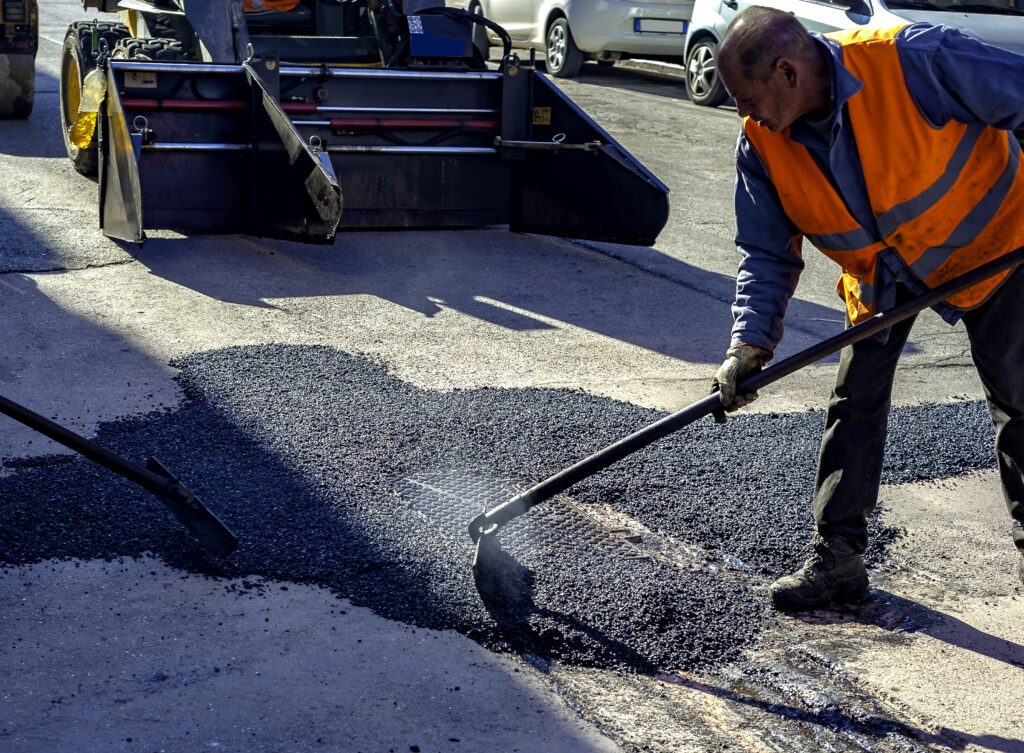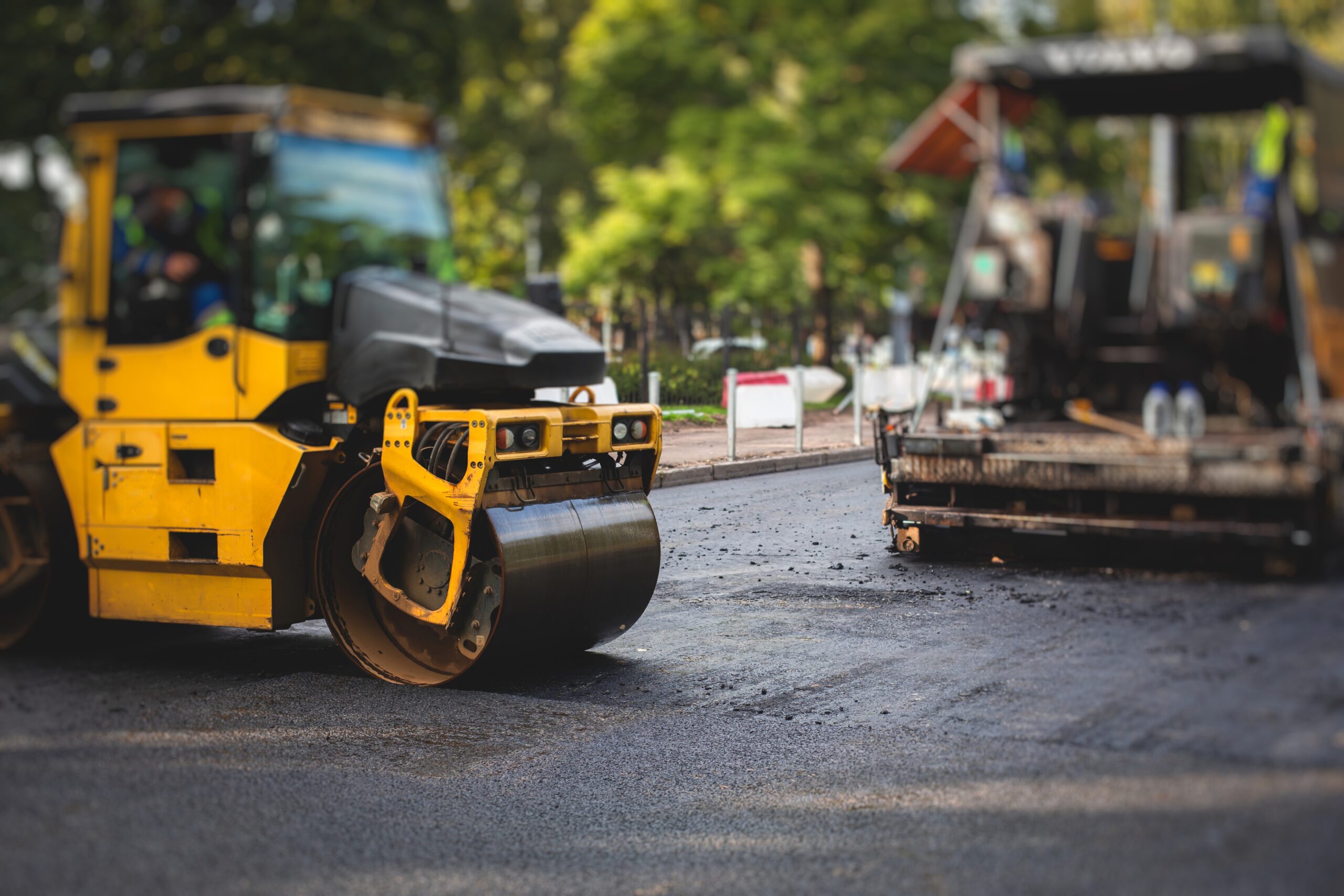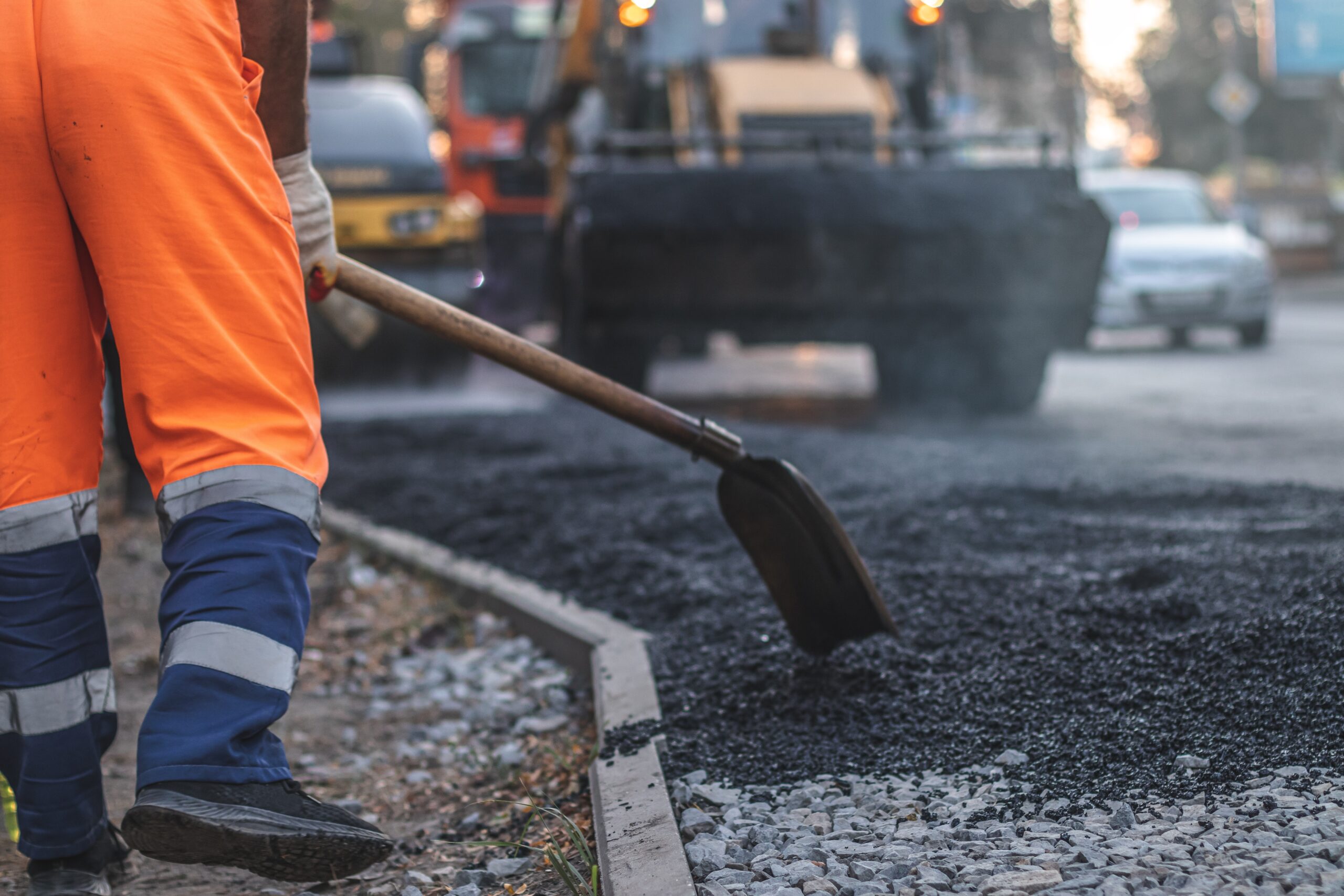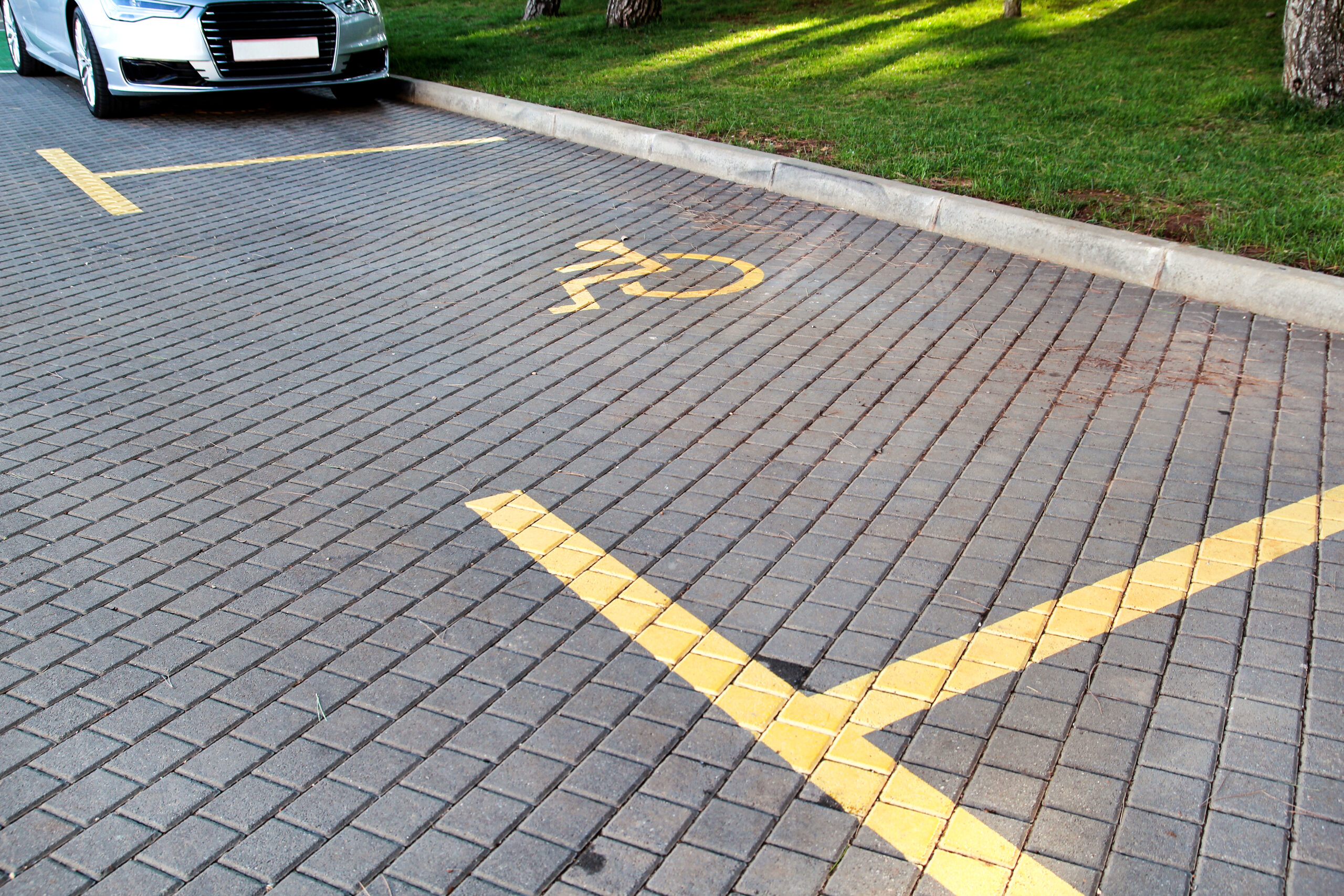
Concrete is built to last, but in Colorado Springs, the elements put that promise to the test. The city level often exceeds 5,000 feet above sea level, so ultraviolet (UV) radiation is more intense. Medical researchers note that UV intensity increases by about 4% for every 1,000 ft of elevation, giving high-altitude regions like Colorado Springs some of the highest UV exposure in the United States.
Climate records from the National Centers for Environmental Information (NCEI) also show the city endures around 52 freeze–thaw cycles per year, meaning surfaces repeatedly expand and contract as water in pores freezes and thaws. These conditions, combined with heavy traffic and winter de‑icing, can shorten a slab’s service life if it’s not carefully maintained.
Well‑maintained concrete doesn’t just hold up against the elements—it continues to add value and appeal to your property year after year. Simple steps such as routine cleaning, sealing at the right intervals, and repairing cracks before they spread will go a long way in protecting your investment. By taking a proactive approach, property owners can avoid costly replacements and preserve the quality of their concrete for decades.
Why Maintenance Matters—Especially in Colorado Springs
Concrete is known for its strength, but it’s not immune to wear. Heavy use, seasonal moisture, and daily temperature fluctuations all contribute to the longevity of a surface. Without proper care, even the best‑poured slabs can lose their integrity much sooner than expected. Pavement preservation specialists emphasize that preventive maintenance performed while pavement is still in good condition is far less expensive than waiting for major deterioration.
Unique Local Climate Stresses
At over 5,000 feet, concrete in Colorado Springs is exposed to relentless UV radiation, which weakens the surface over time. Add to that the freeze-thaw cycles of winter, where water seeps into pores, freezes, and expands, and it becomes clear why cracking and scaling are so common. The region’s rapid temperature shifts between day and night further intensify stress on slabs, sidewalks, and curbs.
Common Deterioration Modes
Cracks, spalling, and scaling are not random defects; they’re the direct result of environmental pressure combined with wear and tear. The Federal Highway Administration’s Petrographic Manual notes that cracks typically arise from plastic shrinkage, settlement, drying shrinkage, thermal stresses, freeze–thaw weathering, or corrosion of reinforcement.
Scaling—where thin mortar layers peel from the surface—is classified as a form of weathering triggered by repeated freeze–thaw cycles or exposure to deicing chemicals.
Industry guidance from the National Ready Mixed Concrete Association (NRMCA) further emphasizes that scaling often begins when salts and moisture infiltrate the concrete, particularly if there is insufficient air entrainment or if deicers are applied too early.
Cost of Neglect vs. Cost of Upkeep
Addressing issues while they are still manageable saves money in the long run. Small cracks can often be repaired at a modest cost, but neglected surfaces may require complete replacement. A regular maintenance routine not only stretches the life of concrete but also prevents liability risks from uneven or damaged surfaces that could lead to accidents.
What’s the most overlooked factor that shortens the life of concrete in Colorado Springs?
One of the most overlooked factors is poor drainage around concrete areas. Even when the slab itself is in good condition, water pooling at the edges can lead to erosion, soil shifting, and cracks that quickly spread. Ensuring proper slope and runoff management is just as important as sealing or repairing the concrete itself.
Baseline Inspection & Schedule
Every long-lasting concrete surface begins with careful observation and planning. Before any maintenance routine can be effective, it’s essential to understand the current condition of your concrete. A thoughtful inspection provides that foundation, helping you address small concerns before they evolve into larger, more expensive problems.
Biannual and Seasonal Inspection Checkpoints
Two key times of year stand out for thorough evaluations—spring and fall. After the snow and ice have cleared, spring inspections reveal cracks, scaling, or discoloration left behind by winter weather and deicing materials.
The National Institute of Health’s bulletin on freeze–thaw effects explains that moisture entering small surface flaws during winter greatly accelerates deterioration, making post-winter inspections essential.
Fall reviews, on the other hand, prepare your concrete for the colder months ahead, ensuring that surfaces are ready to resist moisture and freezing. A midsummer check can also be helpful, especially when high temperatures cause slabs to expand and stress joints.
What to Look For
As you walk the surface, pay close attention to the details that often signal early deterioration. FHWA’s petrographic manual highlights hairline cracks, edge wear, and pooled water as common indicators of surface weakness. Corners, edges, and control joints usually show wear before the rest of the slab, making them critical areas to inspect closely.
Documentation and Mapping
Keeping a record of what you find creates a clear picture over time. The Texas A&M Transportation Institute advises that mapping cracks and recording seasonal changes is an essential part of preventive maintenance planning, helping agencies and property owners budget repairs effectively.
Snap photos, jot down notes, and compare results from one season to the next. This simple habit enables you to spot trends, such as recurring cracks in the exact location or gradual settling in one section. For property managers who oversee multiple sites, these records are invaluable for planning maintenance budgets and scheduling repairs.
How often should professional inspections be scheduled if I already do my own checks?
Even with careful self-inspections twice a year, it’s wise to bring in a professional every two to three years. Experienced contractors can uncover underlying issues—such as drainage deficiencies or subgrade movement—that may not be visible on the surface. Their trained eye provides peace of mind and ensures nothing slips through the cracks.
Routine Cleaning & Debris Management
Day-to-day upkeep is one of the easiest ways to extend the life of your concrete. A few simple habits help prevent surface wear, staining, and premature damage. The U.S. Army Corps of Engineers emphasizes that regular cleaning to remove dirt, debris, and contaminants is one of the most fundamental maintenance practices for concrete structures, as it prevents deterioration and preserves surface performance
- Keep surfaces clear: Keep surfaces clear regular sweeping removes sand, gravel, and leaves that scratch the surface or hold moisture. A quick rinse with a hose or a low-pressure washer helps wash away dirt before it has a chance to settle in.
- Act fast on stains: Oil drips, grease spots, and leaf stains sink in quickly if ignored. A concrete-safe cleaner and a stiff brush are usually enough to lift them. For stubborn marks, use a mild degreaser or poultice, but avoid harsh chemicals.
- Choose safe cleaning methods: Acid-based cleaners and strong deicers may seem effective, but cause long-term surface breakdown. If you use a pressure washer, keep it at a gentle setting to avoid scarring or loosening the top layer of the concrete.
- Build a routine: Cleaning doesn’t have to be complicated—monthly attention is often all it takes to keep surfaces looking sharp and performing well.
Is power washing safe for concrete in Colorado Springs?
Yes, but with caution. Light power washing can be effective for deep cleaning, but using too much pressure may strip the surface or expose aggregate. If you’re unsure, it’s best to rely on a professional who understands how to balance cleaning strength with surface protection.
Sealing Strategies & Timing
Sealing is one of the most important steps you can take to protect concrete in Colorado Springs. With the right product and application schedule, sealing defends against moisture, stains, UV exposure, and the relentless freeze-thaw cycles that challenge local surfaces year after year.
Purpose of Concrete Sealers
A proper sealer acts as a barrier, preventing water, salts, and chemicals from penetrating the surface. By reducing absorption, it also limits the risk of cracking, scaling, and staining. In addition to protection, many sealers enhance appearance by deepening color and giving a clean, uniform finish.
Types of Sealers and Their Benefits
Concrete sealers come in several forms. Penetrating sealers penetrate the surface to create a water-repellent shield without altering the natural appearance. Acrylics provide a thin, protective layer and can add a sheen, while epoxies and polyurethanes offer a thicker, more durable coating, often used in commercial settings. Each has its place depending on the level of traffic and exposure.
Best Time to Apply and Reapply
Timing makes a big difference in effectiveness. In Colorado Springs, sealing is best done in spring or early summer when surfaces are dry and temperatures are moderate. Most sealers last two to three years before reapplication is needed, though high-traffic areas may require more frequent touch-ups. Keeping a schedule ensures consistent protection year after year.
Application Practices for Lasting Results
Preparation is key. Surfaces should be cleaned and fully dried before sealing. Applying in thin, even coats ensures proper coverage without creating slippery buildup. Allowing adequate curing time between coats and before use maximizes the sealer’s performance.
Can sealing fix existing cracks in concrete?
Sealing helps prevent new cracks by limiting moisture intrusion, but it does not repair damage that has already occurred. Existing cracks should be filled and repaired before applying a sealer. This combination offers the strongest protection moving forward.
Crack, Joint & Edge Management
Even the best concrete surfaces will eventually develop minor cracks or wear along joints and edges. The key is addressing these issues early so they don’t spread or compromise the structure. Proper management of these weak points not only extends the life of the concrete but also maintains safety and curb appeal.
Why Cracks Develop
Cracks often form due to natural settling, temperature changes, or shrinkage during the curing process. In Colorado Springs, rapid shifts from hot days to cold nights intensify stress on the concrete, creating hairline cracks that can quickly grow if left untreated.
Understanding Different Types of Cracks
Not all cracks are the same. Hairline cracks may be cosmetic and manageable with surface fillers, whereas wider or deeper cracks can indicate structural stress. Expansion cracks occur when slabs press against each other without proper spacing, and these require specialized joint repair.
Repair Thresholds: DIY vs. Professional
Small surface cracks can often be managed with patching materials available at most hardware stores. However, once cracks widen or show signs of spreading, professional repair becomes essential. Contractors can utilize advanced methods, such as epoxy injections or routing and sealing, to ensure long-lasting stability.
Joint and Edge Maintenance
Joints serve as controlled weak points that allow concrete to expand and contract without compromising its integrity. Keeping these sealed protects against water infiltration and debris buildup that lead to further damage. Edges are also vulnerable, especially where slabs meet soil or asphalt. Reinforcing and sealing these areas prevents chipping and premature wear.
Can untreated edge damage affect the entire slab?
Yes. When edges start breaking down, water and debris can infiltrate beneath the slab, weakening its support base. Over time, this leads to uneven settling, larger cracks, and even complete slab failure. That’s why reinforcing edges and repairing early signs of wear is just as critical as sealing the main surface.
Addressing Surface Imperfections & Spalling
Concrete doesn’t always fail suddenly. More often, small imperfections appear first, signaling the onset of wear that can escalate if not properly managed. Recognizing and treating these early signs helps keep surfaces in a serviceable condition and prevents the need for full-scale replacement.
Recognizing Scaling, Flaking, and Delamination
Scaling is one of the most common issues in Colorado Springs, where thin layers of concrete surface peel away due to repeated freeze-thaw cycles. As described in NRMCA’s CIP 2, scaling often starts as small, localized patches of mortar flaking and then spreads under freeze-thaw stress—particularly when air entrainment is inadequate or salts promote moisture penetration.
Patching Approaches
Minor blemishes can often be handled with cementitious patching compounds or resurfacing mortars. These materials restore surface integrity and provide a smoother finish, thereby extending the life of the slab while enhancing its appearance. For commercial properties, epoxy-based fillers are sometimes recommended for high-traffic areas due to their durability.
When Overlays or Resurfacing Make Sense
If imperfections cover a large portion of the slab, a thin overlay may be the most efficient solution. Resurfacing not only restores aesthetics but also adds a layer of protection against further damage. This option is often more cost-effective than replacing the entire slab, especially when the base remains structurally sound.
The Role of Professional Resurfacing
While small patches are manageable for property owners, resurfacing is best left to professionals. Contractors have access to specialized mixes and application tools that ensure strong bonding and long-term performance. Their expertise also helps prevent recurring issues that can stem from improper repairs.
Can spalling be prevented completely?
Not entirely, but its impact can be significantly reduced. Applying a quality sealer, ensuring proper drainage, and maintaining regular cleaning all help minimize the risks. Quick action on small patches also slows the spread, helping surfaces last longer despite Colorado’s tough climate.
Drainage & Landscaping Considerations
Concrete can only perform as well as the environment around it allows. Poor drainage and poorly planned landscaping are two of the most common culprits behind premature deterioration. To prevent these issues, careful grading is key: the Building America Solution Center recommends a 2 %–4 % slope away from structures and paved surfaces to discourage water from pooling near edges or corners.
Ensuring Proper Slope and Runoff
Concrete should be poured with a slight slope that directs water away from the surface and toward designated drainage areas. Without this grade, water collects along joints or edges, seeping underneath and weakening the base. Over time, this results in cracks and uneven settling.
Avoiding Ponding and Persistent Moisture Zones
Standing water is one of the most effective ways to shorten the lifespan of concrete. Pooled water accelerates scaling during freeze-thaw cycles and increases the likelihood of spalling. Identifying and correcting low spots is crucial to maintaining durability.
Landscaping Practices Around Concrete
Well-placed landscaping enhances curb appeal, but when done incorrectly, it can harm concrete surfaces. Raised soil levels, nearby irrigation systems, or planters placed against edges often lead to moisture intrusion. Keeping plants and soil slightly back from slabs allows air circulation and limits the chances of water damage.
Managing Freeze-Thaw Water Paths
In Colorado Springs, snowmelt and refreezing cycles are a natural occurrence. Directing downspouts away from concrete and ensuring proper grading helps prevent these water paths from pooling and expanding into cracks. Simple adjustments, such as extending a gutter or adding a drainage channel, can make a significant difference.
Does adding gravel or decorative rock near concrete help with drainage?
Yes, when installed correctly. Gravel or decorative rock can reduce splashback, improve runoff, and keep soil from pressing directly against the slab. However, it should be combined with proper grading to make sure water still flows away from the concrete instead of settling alongside it.
Winter & Freeze-Thaw Precautions
Snow, ice, and temperature fluctuations make Colorado Springs winters particularly challenging for concrete. A few smart habits can significantly reduce the damage freeze-thaw cycles leave behind:
- Clear snow promptly: Allowing snow and ice to linger gives moisture time to seep into pores and cracks, potentially damaging the surface. Once it refreezes, the pressure widens the flaws. Shoveling or plowing early prevents this buildup and eases stress on the surface.
- Use safer deicing options: The FHWA cautions that certain deicing chemicals—particularly magnesium chloride (MgCl₂) and calcium chloride (CaCl₂)—can amplify freeze-thaw damage in concrete by increasing saturation, osmotic pressures, and salt crystallization stress. In contrast, deicers like calcium magnesium acetate (CMA) or the use of abrasives such as sand generate far less chemical distress to concrete surfaces.
- Seal before winter sets in: Applying a protective sealer in late fall keeps water and salts from penetrating the surface. This is also the best time to patch minor cracks so they don’t expand during freezing conditions.
- Inspect after each thaw: When temperatures rise, walk the surface to look for new cracks, scaling, or weak spots. Making small repairs at the end of winter or in early spring helps stop seasonal damage from compounding.
Is it better to use salt or sand for winter safety on concrete?
Sand is the safer choice for traction since it doesn’t chemically react with concrete. Salt can provide quick melting, but it often accelerates surface deterioration. For best results, a mix of sand for grip and a concrete-safe deicer for melting offers both safety and protection.
Monitoring & Long-Term Lifecycle Planning

Concrete is designed for durability, but no surface lasts forever without careful monitoring and long-term planning. By keeping track of performance and planning, property owners in Colorado Springs can maximize the value of their investment while avoiding unexpected expenses.
Knowing When to Repair or Replace
Not every defect demands full replacement. The results of lifecycle assessments show that major repair or replacement expenses escalate rapidly once deterioration becomes extensive, whereas timely patching and resurfacing are far more economical. Deep structural cracks, widespread spalling, or compromised slabs may signal that replacement is necessary — and recognizing that tipping point is central to stretching your maintenance budget wisely.
Budgeting for Preventive Maintenance
Allocating funds for inspections, sealing, and minor repairs ensures surfaces receive consistent care. While these costs may seem small compared to replacement, they are an essential part of lifecycle planning. A steady budget for maintenance protects against sudden, costly overhauls.
Scheduling Professional Evaluations
Having a contractor evaluate surfaces every few years is an important safeguard. Their trained eye can detect issues that may go unnoticed, such as subsurface problems or drainage concerns. Professional input also provides a roadmap for planning larger improvements when necessary.
Coordinating with Other Property Work
Concrete maintenance doesn’t happen in isolation. Coordinating repairs with asphalt resurfacing, drainage upgrades, or landscaping projects maximizes efficiency and ensures that all elements of the property work together for durability.
How long can properly maintained concrete last in Colorado Springs?
When cared for with regular sealing, cleaning, and timely repairs, concrete surfaces in Colorado Springs can last 30 years or more. Without maintenance, that lifespan is often cut in half due to the harsh climate.
Protecting Your Concrete for the Long Run
Well-maintained concrete doesn’t just hold up against the elements; it continues to add value and appeal to your property year after year. The difference often comes down to staying consistent with care—addressing small repairs quickly, sealing on schedule, and keeping water directed away from the slab. These efforts prevent the gradual wear that can shorten the life of your surfaces.
Reach out to Asphalt Coatings Company today and discover how professional care can keep your concrete performing at its best for years to come.
Frequently Asked Questions
How often should I reseal my concrete driveway in Colorado Springs?
Most driveways benefit from resealing every two to three years. However, high-traffic areas or surfaces exposed to heavy snow and deicing salts may require more frequent applications to stay protected.
Can new concrete be sealed right away?
Freshly poured concrete needs time to cure before sealing. In most cases, a waiting period of at least 28 days is recommended. This allows moisture to escape, ensuring the sealer bonds properly.
Are all cracks in concrete a sign of failure?
No. Small hairline cracks are common and often cosmetic. What matters is whether they expand, allow water intrusion, or create trip hazards. Monitoring them closely helps determine when repairs are needed.
Does stamped or decorative concrete require the same maintenance?
Yes, decorative concrete still needs cleaning, sealing, and inspections. In fact, sealing is essential for stamped finishes because it preserves color, enhances appearance, and prevents premature wear.
What’s the biggest mistake property owners make with concrete maintenance?
The most common mistake is delaying small repairs. A simple crack or drainage issue left unattended can quickly escalate into widespread damage. Tackling problems early saves money and extends the surface’s life.



